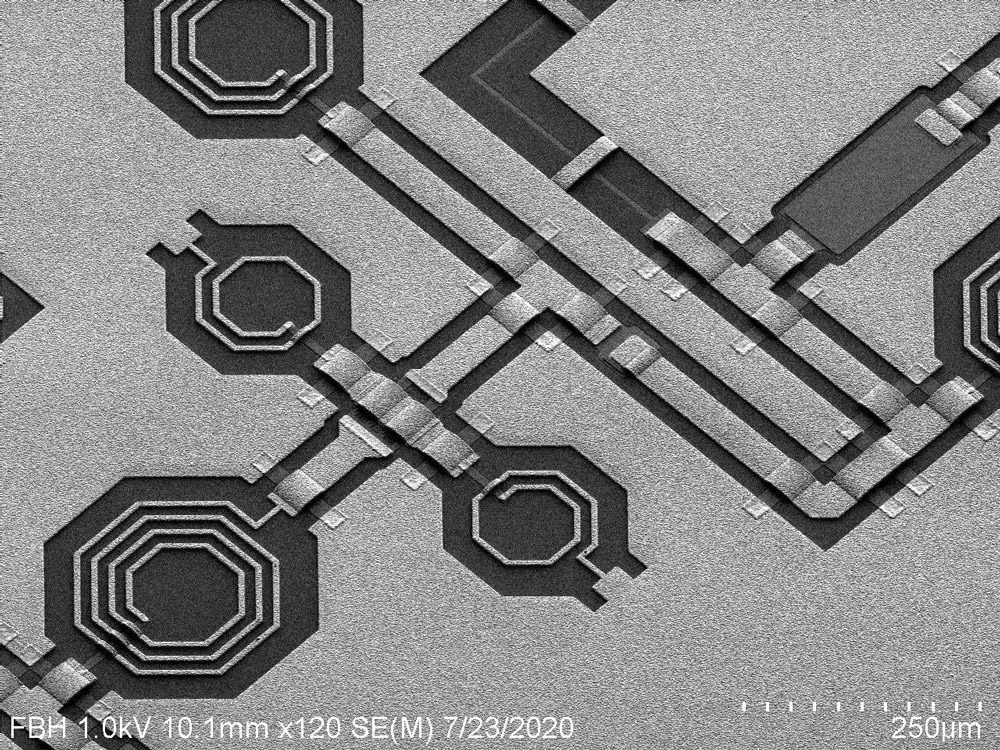News: Microelectronics
22 March 2021
FBH, SweGaN and University of Bristol partner in ESA’s Kassiopeia project
Funded under the European Space Agency (ESA) ARTES Advanced Technology Program ‘European Ka-band high power solid-state technology for active antennas’, in March the Kassiopeia project was launched to provide a value-added chain using technology only available in Europe.
Led by Ferdinand-Braun-Institut, Leibniz-Institut für Höchstfrequenztechnik (FBH) of Berlin, Germany and joined by epitaxial wafer foundry SweGaN AB of Linköping, Sweden and the UK’s University of Bristol, the consortium aims to demonstrate a fully independent European supply chain, from silicon carbide (SiC) substrates, gallium nitride (GaN) epitaxy, GaN device processing up to power amplifiers. For this purpose, Ka-band monolithic microwave integrated circuits (MMICs) using novel epitaxy, processing and circuit concepts towards highly efficient GaN and aluminium nitride (AlN) devices will be developed and demonstrated. The Ka-band frequency band is used, for example, in satellite communications.

Picture: SEM image of gallium nitride MMICs.
FBH is contributing its industry-compatible Ka-band MMIC technology on 100mm GaN-on-SiC wafers. “The unique selling point of our GaN MMIC technology is its highly reproducible and reliable iridium sputter-gate technology,” says Dr Joachim Würfl, head of FBH’s Power Electronics Department. “This technique reduces dynamic losses (gate lagging) to values up to two times less than competing institutional and industrial technologies,” he claims. The technology also significantly improves device reliability, he adds. Together with new approaches in terms of process technology and circuit concepts both targeting parasitic loss reduction, highly efficient Ka-band MMICs will be developed. The technology should hence provide advantages in performance and reliability, which are particularly important for spaceborne devices.
SweGaN is participating with its unique QuanFINE buffer-free solution for GaN-on-SiC epiwafers, bringing its expertise in epitaxial layer design and optimization to the project. The firm will also supply in-house-developed semi-insulating SiC substrates for evaluation. These activities are financially supported by the Swedish National Space Agency (Rymdstyrelsen). SweGaN is recognized for providing GaN epiwafers for sub-6GHz and millimeter-wave transistors with a significantly low thermal boundary resistance and limited trapping effects – based on its proprietary buffer-free approach. The firm supplies epitaxial material to manufacturers of components and devices for satellite communications, telecom and defense applications, plus power electronics for electric vehicles (EVs), solar inverters etc. “Conventional GaN-on-SiC materials for Ka-band applications still lack maturity, leaving significant room for innovation and improvement,” says chief technology officer Jr-Tai Chen. “SweGaN will introduce its revolutionary epitaxial manufacturing process to address the challenge.”
The University of Bristol’s research in this program focuses on direct thermal measurements on active GaN transistors by using micro-Raman thermography and advanced device characterizations and modeling. This will provide continuous feedback to all device and epitaxial developments planned in Kassiopeia.








